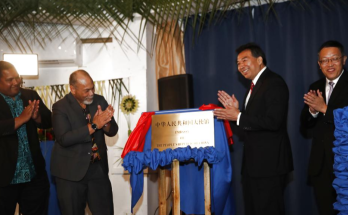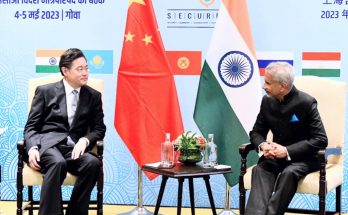 I knew I was missing something about Chinese’ attitude towards India, and then one fine day it clicked into place. I remember vividly how my taxi driver in Dalian kept glancing at me from the rear view mirror and singing, “ankhekoiyaban,” simultaneously bopping his head and doing a mini dance with his stumpy hands on the steering wheel. That was our only communication for a twenty-minute taxi ride. He didn’t bother asking me where I am from, but he obviously knew I was Indian.
I knew I was missing something about Chinese’ attitude towards India, and then one fine day it clicked into place. I remember vividly how my taxi driver in Dalian kept glancing at me from the rear view mirror and singing, “ankhekoiyaban,” simultaneously bopping his head and doing a mini dance with his stumpy hands on the steering wheel. That was our only communication for a twenty-minute taxi ride. He didn’t bother asking me where I am from, but he obviously knew I was Indian.
Normally, I’m a bit reluctant to flaunt my Indian identity in China. Looking at my blue jeans, university hoodie and backpack most Chinese locals with limited exposure to foreigners think that I’m an American student studying Chinese at a Chinese university. I lived in America long enough to accept that I’m from there. But the real reason I don’t correct them and proudly proclaim that I’m an Indian is because of the sour political past relationship between the two countries. I thought it would be easier to exchange a few friendly words being an American rather than an Indian. But I had misunderstood what the regular Chinese felt towards India.
The Chinese locals rarely have an opinion other than one of admiration for Indian culture, especially Bollywood. So that day when I reached my university, I wanted to share my surprise with my students about how my Chinese taxi driver sang a Bollywood number with gusto. The problem was that I couldn’t comprehend his jumbled words and I asked my students, “What do you know about India?” And nearly all of them burst out singing the same song, still sounding the same to me “ankhekoiyaban”. I had to ask the best singer in my class, CC, a very tall Dalian native young woman with aspirations to be on Voice of China, to sing that song a bit slower and clearer. So it was none other than Shahrukh Khan’s popular song, “Ankhe khuli ho ya ho bandh deedar unka hota hai.”
 CC proceeded on to tell me that it’s not just this song that’s popular, but also that she grew up listening to Bollywood songs and watching films with her parents who still are big fans of Indian movies. Mithun Chakrovarthy was quite a popular star with the Chinese back in the 1990s, with Disco Dancer being a hugely popular film in China.
CC proceeded on to tell me that it’s not just this song that’s popular, but also that she grew up listening to Bollywood songs and watching films with her parents who still are big fans of Indian movies. Mithun Chakrovarthy was quite a popular star with the Chinese back in the 1990s, with Disco Dancer being a hugely popular film in China.
“It’s the dancing, the colors the music, that I love about Indian movies” says Tete, a passionate yoga instructor working at one of Dalian’s popular gyms. She gestures with her hands and attempts to display her take on Bollywood dances.
The gym is located near a small shop with a T.V. screen outside playing songs from Devdas and Hum Aapke Hain Kaun on replay. I always get a whiff of Indian incense every time I pass by the shop. Inside the shop is an entire range of Bollywood-inspired dresses and jewellery available, but at significantly higher prices than in India. However, the presence of this shop in a small Chinese town speaks something of how deep an impact Indian culture has made on China. And a few blocks away from that shop, inside a nearly all-Chinese food court is one unique food stall that has surprisingly made its way in there, and that is an Indian food stall owned by two Indians serving a variety of north Indian food and masala chai.
As China is opening doors to foreign influences, Bollywood has made its way in along with Starbucks, Hollywood blockbusters, Japanese cartoons, Korean soaps and pop music and French travel brochures.
“ So do you like to dance?” I ask my young Chinese friends, who represent different Chinese provinces. “No, people in China don’t dance.” Except for a few exceptions and modern pop dances, the act of shaking their bodies with music is foreign to Chinese. They commonly dance in synchrony for exercise in the evening hours – a group of people, both young and old, holding pieces of cloth, often red, move in rhythm and slow movements. Even in freezing temperatures of below 2 degrees Celsius, the evening dancers are still present getting in their regular exercise and community time.
So do you like to dance?” I ask my young Chinese friends, who represent different Chinese provinces. “No, people in China don’t dance.” Except for a few exceptions and modern pop dances, the act of shaking their bodies with music is foreign to Chinese. They commonly dance in synchrony for exercise in the evening hours – a group of people, both young and old, holding pieces of cloth, often red, move in rhythm and slow movements. Even in freezing temperatures of below 2 degrees Celsius, the evening dancers are still present getting in their regular exercise and community time.
But among the young and more adventurous crowd, it’s hip-hop, belly dancing and Indian dancing that’s becoming popular.
“When they dance, they look so free and happy,” says an old bicycle repairman looking up while changing my bicycle tyre. He recognises me as an Indian with big eyes and tells me enthusiastically how much he loves Indian songs, dances and movies. I ask him to sing me some Indian song he knows, and this time I’m not surprised — it’s “ankhekoiyaban” again!






